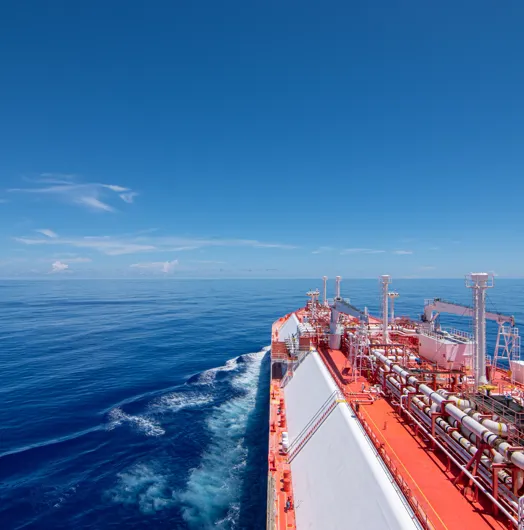The operational measure adopted by the IMO, Carbon Intensity Indicator (CII), came into effect at the start of the year. As a result, a large share of the global fleet is expected to reduce sailing speed in order to comply, which would impact asset values. The Clarksons Green Transition team has developed a break-through speed-CII modelling tool that, through client projects has demonstrated that many of the traditional methodologies being relied upon for decision-making are inaccurate.
Based on the outcome of these projects, Clarksons advises clients to re-look at any CII-related decisions and how calculations are being made to ensure that they are maximising the upside potential of vessel utilisation and mitigating downside risk as far as possible.
The Green Transition team, headed up by Kenneth Tveter, argue that CII improvement potential as a result of speed reduction can be grossly overestimated and that it will not necessarily improve CII ratings. Lead analyst for the team, Jon Leonhardsen explains “The reason for the misconception is that calculations are based on textbook speed-consumption curves which have an exponential growth across an entire speed range. However, if you factor in all of the consumers of a ship and the variables of real-world sailing conditions, the curve becomes less exponential (or flatter) at lower speeds.”
Kenneth Tveter concludes “This means that the marginal fuel-saving for distance sailed becomes lower, and this is ultimately what matters for CII performance. So, whilst some ships are needing to slow down significantly to comply, for others speed reduction isn’t viable at all and other costly measures and improvements need to be done. In summary, imprecise understanding of the relationship between speed and CII can create a false impression of the CII improvement toolbox.”
To assist, the Green Transition team has launched a new CII Assessment Modelling tool that, in some instances, has proven to be 30% more accurate than traditional modelling methodologies in predicting real-world fuel consumption, and CII, especially at lower speeds.
The tool, developed with Clarksons proprietary statistical methodology, is already helping clients to overcome potential under and overestimation of sailing speed potential, meaning they can achieve greater confidence in ship speed potential and value, and maximise utilisation and value of existing fleet for as long as possible.
Whilst the introduction of CII in January wasn’t a surprise to the shipping industry, it has been met with mixed reaction and many ship operators do not have plans in place for effective management. Clarksons welcomes the introduction of measures that will help to ensure the industry can become greener and reduce its overall contribution to CO2 emissions. We continue to be a part of the conversation and shape the adoption emission-reducing initiatives to help reach targets.
The availability of Clarksons CII assessment modelling tool goes a long way to help putting accurate and reliable decision-making tools back into the hands of ship operators, ensuring that they can continue to deliver to the needs of global trade today whilst planning for the objectives of tomorrow. The lack of clarity and the complexity around how CII calculations are made can easily lead to inaccurate decision-making or procrastination.
Kenneth summarises: “Our ultimate goal is to provide the industry with a new, accurate and reliable way of operating within CII effectively. Only through clarity and standardisation of approach can the industry truly start to make smarter and cleaner decisions for voyage deployment and fleet renewal strategies that will have a meaningful impact on decarbonisation goals.”




